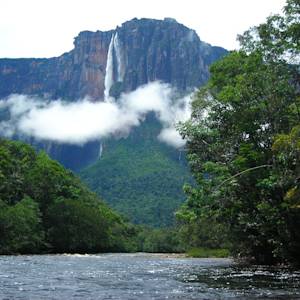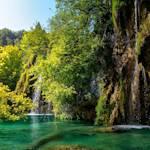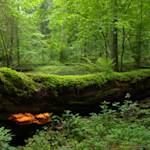Kakadu National Park, largest in Australia, savanna woodlands to monsoon forests
1979 CE • Northern Australia
"Kakadu National Park is a living cultural landscape with exceptional natural and cultural values. Kakadu has been home to Aboriginal people for more than 50,000 years, and many of the park’s extensive rock art sites date back thousands of years . . . The largest national park in Australia and one of the largest in the world’s tropics, Kakadu preserves the greatest variety of ecosystems on the Australian continent including extensive areas of savanna woodlands, open forest, floodplains, mangroves, tidal mudflats, coastal areas and monsoon forests. The park also has a huge diversity of flora and is one of the least impacted areas of the northern part of the Australian continent. Its spectacular scenery includes landscapes of arresting beauty, with escarpments up to 330 metres high extending in a jagged and unbroken line for hundreds of kilometres . . . The property protects an extraordinary number of plant and animal species including over one third of Australia’s bird species, one quarter of Australia’s land mammals and an exceptionally high number of reptile, frog and fish species." The Kakadu was first recognized as an Aboriginal reserve in 1964 when Australians were becoming more interested in recognizing the land interests of Aboriginal people. In 1979, the recognition was extended to national park status.
"Kakadu National Park," UNESCO World Heritage Convention.
"History," Kakadu National Park.
Image: Thomas Schoch, CC BY-SA 2.5, via Wikimedia Commons


Learn about Maya Lin’s fifth and final memorial: a multi-platform science based artwork that presents an ecological history of our world - past, present, and future.

Discover ecological histories and stories of former abundance, loss, and recovery on the map of memory.

Learn how we can reduce our emissions and protect and restore species and habitats – around the world.

See how art can help us rethink the problems we face, and give us hope that each one of us can make a difference.

Help make a global memorial something personal and close to home. Share your stories of the natural world.


